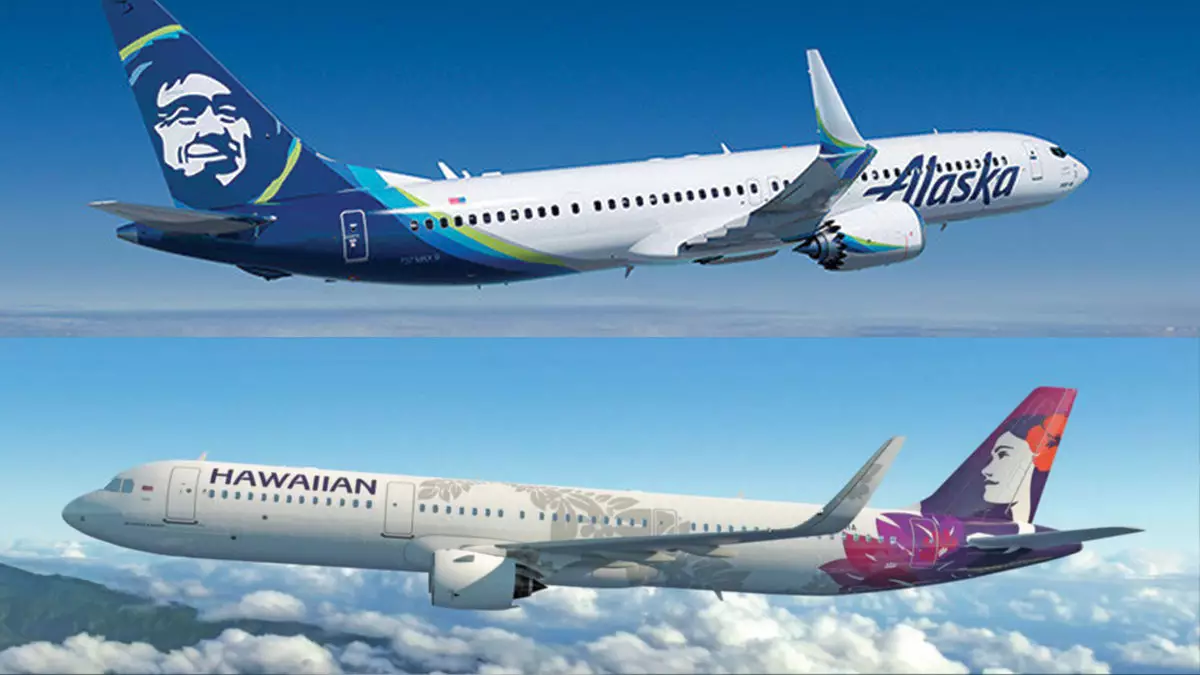The aviation industry is poised for transformation with Alaska Airlines’ recent announcement about its impending $1.9 billion acquisition of Hawaiian Airlines. Recently receiving conditional approval from the U.S. Department of Transportation (DOT), the merger is a critical development not just for both companies but also for the broader airline market in the United States. With an official announcement that the deal is expected to close within days, the aviation community is abuzz with implications and interpretations of this landmark transaction.
Interestingly, this approval follows significant progress on the regulatory front. Just months prior, the Justice Department opted not to contest the merger, clearing a substantial legal hurdle. The DOT’s conditional approval adds another layer of scrutiny that has the potential to reshape the operational framework of both airlines as they prepare to integrate.
While the DOT has paved the way for the merger, it has also implemented conditions that both airlines must adhere to during their integration process. These requirements are designed to maintain service quality while promoting competition, ensuring that neither airline can monopolize specific routes. The regulations stipulate that Alaska and Hawaiian must sustain or enhance their current service levels on routes where they are the only carriers or among a small number of operators. This regulation is especially pertinent for interisland flights, a vital service for both tourism and local travel within Hawaii.
The expectations do not stop at service levels; they also touch upon customer experience and competitive fairness. As a significant component of the merger, both airlines will continue their existing interline agreements, including the vital partnership between Hawaiian and Mokulele Airlines, ensuring that regional connections remain robust. In an era where customer service can make or break an airline’s reputation, the DOT’s requirements prompt Hawaiian to adopt customer-friendly policies already in place at Alaska. These stipulations have the potential to improve service for families traveling with children and adequately compensate passengers facing delays.
In a commendable move towards inclusivity, the DOT has mandated that both airlines prioritize military service members by offering them specific benefits. This includes one free carry-on and two checked bags for military personnel and their families, as well as waived change fees if travel arrangements need to be altered due to military orders. Such policies are essential for making air travel accessible to those who serve and their families, reflecting a broader societal acknowledgment of their sacrifices.
Furthermore, the merger has significant implications for the flight loyalty programs of both airlines, which deserve close scrutiny. Alaska Airlines is tasked with maintaining the value of HawaiianMiles during the integration process, ensuring that its transition to Alaska’s Mileage Plan does not devalue existing customer investments. The commitment to a 1-to-1 conversion ratio for miles signifies an effort to keep loyal customers engaged and satisfied during the integration period. Moreover, the assurance that these loyalty points won’t expire is a pivotal move that could boost customer retention.
As the merger progresses, leadership changes are also on the horizon. Alaska Airlines CEO Ben Minicucci will retain his role post-merger, while Joe Sprague, the regional president for Hawaii and the Pacific, is set to step in as CEO of Hawaiian Airlines. This leadership structure aims to facilitate a seamless transition as Hawaiian Airlines integrates more closely with Alaska Airlines while still operating separately under a joint ownership model initially.
The strategic approach indicates a desire to remain sensitive to the established brand cultures of both airlines during this transitional phase. The retention of the Hawaiian and Alaska brands under a single operating certificate aims to appeal to loyal customers from both sides, creating a unified yet distinct experience.
The acquisition of Hawaiian Airlines by Alaska Airlines represents a significant moment in the airline industry that could reshape customer experiences and alter the competitive landscape. While regulatory conditions imposed by the DOT will require careful oversight and adherence, the potential synergies from this merger promise to enhance service offerings, expand route choices, and foster greater loyalty among frequent flyers. As travelers await the finalization of this deal, the aviation community stands at the precipice of a new era that may redefine air travel in the United States, particularly in the crucial Hawaiian market.


Leave a Reply